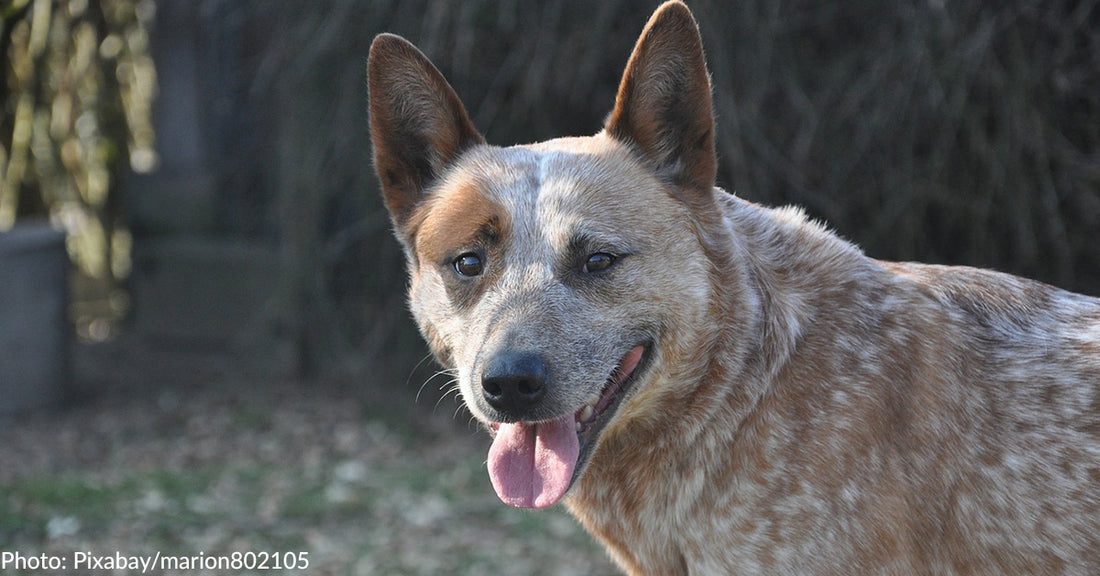7 Dog Breeds Prone To Deafness
Andrea Powell
Deaf Dog Awareness week is always the last full week of September. Deafness in dogs is more common than you may realize, especially among certain breeds.
Dr. George M. Strain, former veterinarian and researcher at the School of Veterinary Medicine at Louisiana State University, discovered, "8% of all dogs in the US are bilaterally deaf and 22% are unilaterally deaf".
Any dog can have congenital deafness (present at birth or shortly after) but breeds with white pigmentations are at a higher risk.
Multiple studies confirm that dogs with merle and piebald coat pigmentations and blue eyes have a higher risk of deafness. Dogs with these coat colors often have white ears and lack pigment in the inner ear which causes hearing loss.
Learn more about the seven dog breeds prone to deafness below.
Dalmatian
30% of Dalmatians are deaf in either one or both ears. It is thought to be genetic and caused by the lack of pigmentation in their inner ear. DAS Dalmatians Sanctuary encourages people to learn more and said, "Living with a deaf dog can be extremely rewarding and they are often quicker at picking things up than a hearing dog. Maybe because there are no noise distractions. They are very loving, responsive and manageable but you must always remember they can’t hear and you need to communicate exactly what you need with your actions and expressions".
Bull Terrier
Deafness in both ears is seen in roughly 18% of white bull terriers. However, hearing loss can occur in any coat color. Boston Terrier World shared on their website, "In Bull Terriers, the piebald gene is closely associated with deafness. Dogs with excessive white markings due to the piebald gene are more likely to have hearing impairments. This correlation is believed to be linked to the same genetic factors that control the development of the inner ear, as well as the distribution of pigmentation in the coat."
Australian Shepherd
Double merle Australian shepherds are more likely to experience hearing loss and/or blindness than single merle dogs. Australian Shepherd Health & Genetics Institute explains, "The genes which determine white markings impact pigment cells wherever they occur in the body, not just in the coat. White on or near the ears is an indicator that pigment may be lacking in the inner ear as well. Pigment cells play an important part in the process of translating the mechanical vibration of a sound wave into the electrical impulse which travels via nerves to the brain. A tiny organ in the inner ear called a cochlea contains fluid and is lined with hair-like structures called cillia. When sound vibrates the air, those vibrations travel through the ear canal and vibrate the fluid which wiggles the cilia. The cilia connect with nerve endings through pigment cells. These cells translate the mechanical vibration of the cilia into electrical impulses that travel the nerves to the brain. If the pigment cells are absent, this translation can’t take place and the dog will be deaf in that ear."
English Setter
The English Setter Association in the U.K. and America performed studies on the breed to try and determine what causes deafness. They both found that puppies with a deaf parent had increased chances of being deaf. "The Americans also have data from 7 litters produced by Normal x Unilateral parents:
45 puppies tested 34 Normal hearing 75.60 %
9 unilaterally deaf 20.00 %
2 bilaterally deaf 4.40 %
24% of puppies were affected. 57% of litters had 1 or more affected puppy. It is clear from the American data that the incidence of both unilateral and bilateral deafness is much higher when one of the parents is unilaterally deaf, suggesting a genetic component to the condition."
Catahoula Leopard Dog
These dogs have stunning merle or brindle coats and striking blue eyes, which means they are more prone to deafness. They are otherwise very healthy and active dogs. PetMD states, "The cause of this disorder is not completely understood, but there is a correlation between the dog’s coat color and deafness. Catahoula Leopard Dogs with mostly white fur may be more likely to inherit the disorder. The cause of this disorder is not completely understood, but there is a correlation between the dog’s coat color and deafness."
Australian Cattle Dog
A study published by BMC Veterinary Research looked at how deafness impacts Australian Cattle Dogs. They found that 11% of the nearly 900 dogs tested were deaf in one or both ears. They concluded, "Australian Cattle Dogs suffer from CHSD (Congenital hereditary sensorineural deafness), and this disease is more common in dogs with mask-free faces, and in those without pigmented body patches." They also discovered that it was more common in females.
English Cocker Spaniel
Dr. Strain examined solid and parti-colored English Cocker Spaniels to see how the pigmentation in the coat color played a role in deafness. Of the 1,510 parti-colored dogs examined, 84 or 5.6% were either deaf in one or both ears. The solid dogs had a lower occurrence of deafness with a total of 1.4%.
Conclusion
This list is not all inclusive. Congenital deafness has been found in over 106 breeds, according to Dr. Strain.
Don't be afraid to adopt a deaf dog. Dogs cope extremely well with hearing loss and can do anything other dogs can do. As a bonus, they will remain calm during thunderstorms and fireworks. Please consider adopting a deaf dog or cat from your local shelter.










